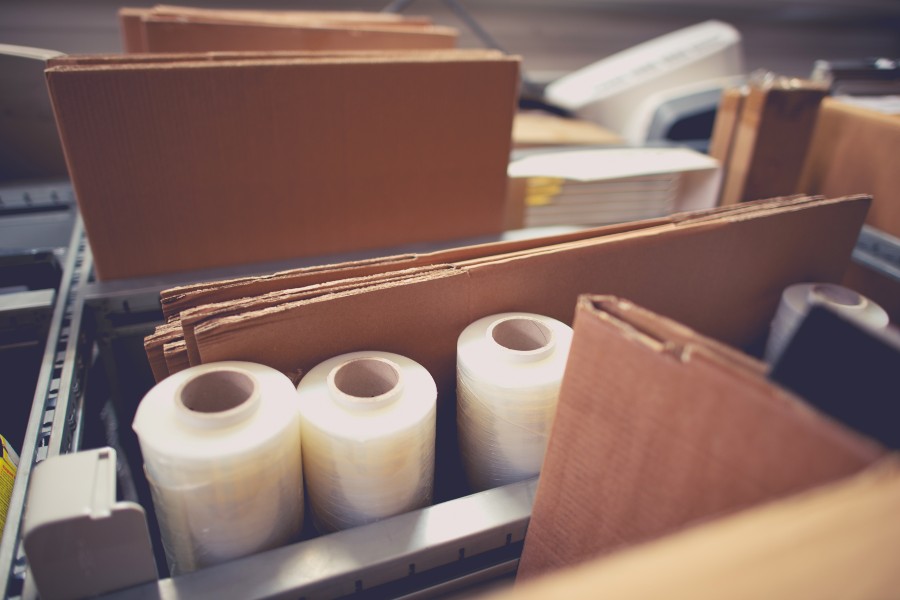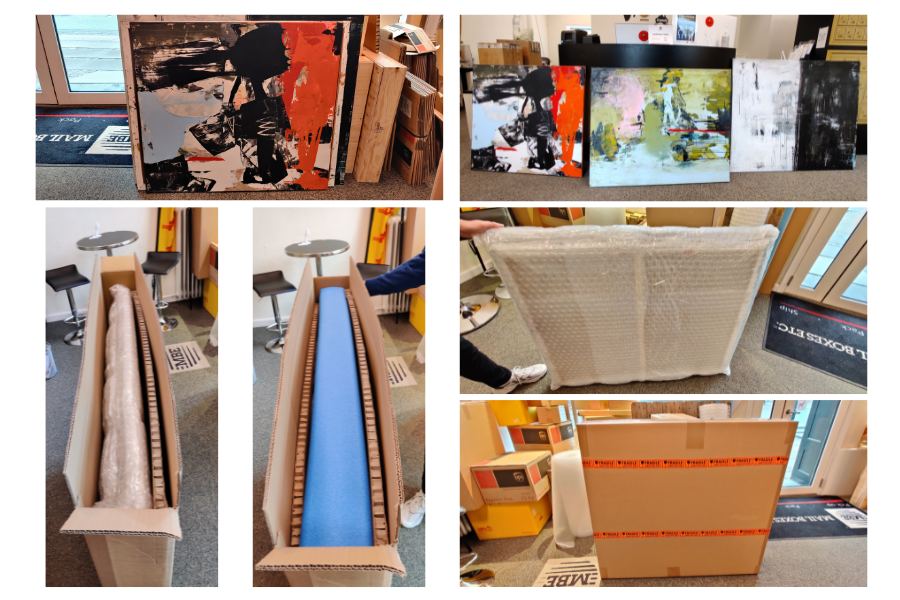What are the best packing materials for shipping?

The rise in shipping has been largely spurred on by the rise in global online shopping habits as well as the e-commerce boom. With speed, ease and convenience offered by many online retailers, it’s important both for the customer, the unboxing experience and for branding purposes for your product to be packaged in the most appropriate way.
This is why you need to be aware of the best packing materials for shipping as packing & shipping go hand-in-hand. This is especially true for high-value items such as antiques, electronics and others. So, if you want to find out more about the best packing materials for shipping, keep reading below.
What are the different types of packaging?
Before we get into the best types of packing materials for shipping, it’s worth considering what are the different types of packaging? You may be thinking about the good old-fashioned boxes that were once sent out as parcels between friends and family.
But the types of packaging since then have significantly changed to produce a great customer unboxing experience as well as ensure that each product shipped is in good condition and remains undamaged during the shipping process.
So, without further ado, here’s a brief list of some of the most common modern types of packing materials that should necessarily be a part of your inventory.
- Cardboard boxes for packing
- Bubble wrap
- Packing peanuts
- Foam packaging/packing foam
- Packaging paper
- Korrvu packaging
Although you may have heard of most of these types of packaging, it’s also worth noting that when it comes to what are the different types of packaging, many of these packaging types can and should be used together for a more cohesive and safe final packaged product.
Whether you use boxes for international shipping, the types of packaging boxes, such as cardboard or corrugated boxes, the effectiveness of your packaging will be dependent on your product’s primary packaging (the original package it comes in), secondary packaging (also known as the packaging for shipping) and tertiary packaging (which refers to the container that your product ends up in when either placed on a flight or ocean liner for transportation).
What is the best material for packaging?
Having covered the different types of packaging, you now need to know what is the best material for packaging? Although parcel packaging may seem straightforward, it’s actually quite a complex process. That’s because the type and material of packaging that you will need will depend on several factors. These include:
- The size of the parcel
- The weight of the parcel
- Whether it has sharp edges or parts
- Its monetary value – whether or not it is considered a high-value shipment
- Whether or not it is considered a fragile item
- The shape of the item itself
- The levels of customisability that you are looking for
- The necessary temperature at which your product performs optimally
- The final destination where your product needs to arrive, and
- The costs you are willing to pay for packaging and shipping as part of your budget.
As such, answering the question: what is the best material for packaging can be a bit more difficult than initially thought because there are so many factors that go into the process. Since every online retailer sells different products at different prices and with different shipping options and branding offerings, everyone will have different approaches to shipping and the product packaging required for a safe shipment and shipping experience.
What are the best materials for shipping products?

When it comes to the question: what are the best materials for shipping products, a reminder may be worth it at this point. Here, we need to distinguish between primary, secondary and tertiary packaging.
With primary packaging, you are dealing with the main packaging of your product. If it is a bottle of water, for example, the plastic or glass bottle will be considered the primary packaging.
With regard to secondary packaging, this involves additional packing materials to help protect your product during transit. As such, secondary packing materials may include cardboard boxes, packing peanuts, packing paper, etc.
Finally, there is also tertiary packing. This is when the secondary packing is taken aboard a vessel and is placed in appropriate containers for seamless and safe shipping and to get your product to its final destination in one piece and undamaged. Examples of these include wooden pellets and metal containers. Both are well suited for air and ocean freight and can protect your products from the natural elements as well as shocks and bumps along the way. As such, when it comes to the question of what are the best materials for shipping products, pellets and containers are usually the best option for long-distance shipping.
How to choose the right packaging materials for your product
Whether your branding requires that your products are packed in custom packaging or you have and use different packaging materials for shipping high-value items, one question that you’ll need an answer to is how do you choose product packaging? As mentioned above, there are several different criteria that you should consider and among these there are a few others to bear in mind, depending on your budget and organisational needs. Here are some of these:
- Your budget for shipping where higher-quality packaging generally tends to cost more
- The brand identity that you would like to convey to your consumer as part of their unboxing experience
- How much it weights and what volumetric size it is
- The durability of the packaging and which shipping method you will use (air, road, ocean)
- Whether you and your customers are aiming at using eco-friendly packaging as part of your sustainability efforts. Find out more about EPR and sustainable packing solutions.
And there you have it! You now know what some of the best packing materials are, what criteria you should consider when packing your products for shipment to your customers and the answer to the question: how do you choose product packaging? And if you need any help deciding or navigating the world of packing and packaging and you’d like professional advice, simply reach out to us at Mail Boxes Etc. Denmark and our helpful team will be more than happy to assist you!
☎ +45 3120 3616
⌨ info@mbedenmark.dk
📍 Østerbrogade 226, st. tv, 2100 Copenhagen, Denmark